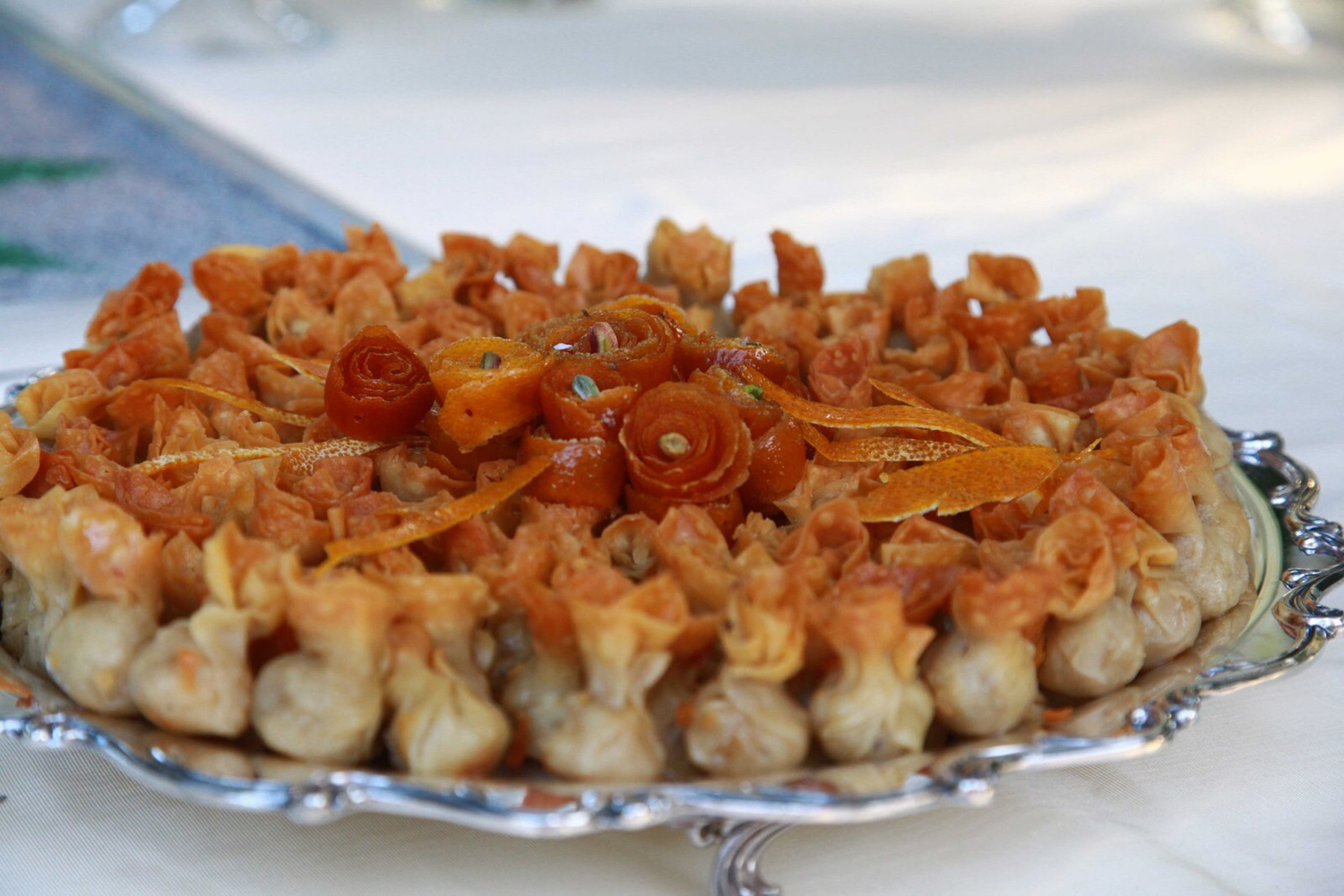A Persian Wedding
by Sussan Mahjouri, Tastemaker in Residence








There are two stages on the path to a Persian marriage. Most often both take place on the same day, but occasionally there could be some time between the two. The first is the legal process of getting married, when both the bride and bridegroom and their guardians sign a marriage contract. The second stage is the wedding reception - the actual feasts and the celebrations, which traditionally lasted from 3 to 7 days.
The ceremony takes place in a specially decorated room with flowers and a beautiful and elaborately decorated spread on the floor called "Sofreh-ye Aghd". Traditionally is set on the floor facing east, the direction of sunrise (light). Consequently, when bride and bridegroom are seated at the head of Sofreh-ye Aghd, they will be facing "The Light".
By custom this would normally take place at the bride's parents/guardians home. The arrival of the guests, who are to be witnesses to the marriage of the couple, initiates the wedding ceremony. Traditionally the couples' guardians and other elder close family members are present in the room to greet the guests and guide them to their seats. After all the guests are seated the bridegroom is the first to take his seat in the room at the head of Sofreh-ye Aghd. The bride comes afterwards and joins the bridegroom at the head of Sofreh-ye Aghd. The bridegroom always sits on the right hand side of the bride. In Zoroastrian culture the right side designates a place of respect.
Persian Wedding Spread - Persian Wedding Sofreh-ye Aghd
The spread that is used on the floor as the backdrop for Sofreh-ye Aghd was traditionally passed from mother to daughter (or occasionally son). The spread is made of a luxurious fabric such as "Termeh" (Cashmere: A rich gold embroidered fabric originally made in Cashmere from the soft wool found beneath the hair of the goats of Cashmere, Tibet, and the Himalayas), "Atlas" (Gold embroidered satin) or "Abrisham" (Silk).
- Mirror (of fate) and two Candelabras (representing the bride and groom and brightness in their future). The candelabras are placed on either side of the mirror. The mirror and two candelabras are symbols of light and fire, two very important elements in the Zoroastrian culture. When the bride enters the room she has her veil covering her face. Once the bride sits beside the bridegroom she removes her veil and the first thing that the bridegroom sees in the mirror should be the reflection of his wife-to-be.
- A specially baked and decorated flatbread with blessing written in calligraphy on it. The writing is usually with "Zaffaron", cinnamon, Nigella seeds, or glitters. This symbolizes prosperity for the feasts and for the couple’s life thereafter. A separate platter of this flat bread, feta cheese and fresh herbs are also present to be shared with the guests after the ceremony, to bring the new couple happiness and prosperity.
- A basket of decorated eggs and a basket of decorated almonds, walnuts and hazelnuts in the shell to symbolize fertility.
- A basket of pomegranates and/or apples for a joyous future. Pomegranates are considered heavenly fruits and apples symbolize the divine creation of mankind.
- A cup of rose water extracted from special Persian roses to perfume the air.
- A bowl made out of crystallized sugar to sweeten life for the newly wed.
- A brazier holding burning coals sprinkled with wild rue a popular incense. Wild rue is used in many Zoroastrian ceremonies, rituals and purification rites. It is believed to keep the evil eye away and bring on plenty of health.
- A bowl of gold coins representing wealth and prosperity.
- A scarf or shawl made out of silk or any other fine fabric to be held over the bride and bridegroom's head throughout the ceremony by various happily married female relatives (mostly the brides’ close family members).
- Two sugar cones made out of hardened sugar to be used during the ceremony. These sugar cones are ground together above the bride and bridegroom's head (over the scarf held above their heads) throughout the ceremony to shower them in sugar (symbolizing sweetness and happiness).
- A cup of honey to sweeten life. Immediately after the couple is married they each should dip one pinky finger in the cup of honey and feed it to the other one.
- A needle and seven strands of colored thread to figuratively sew up the mother-in-law's lips from speaking unpleasant words to the bride! The shawl that is held above the couple's head throughout the ceremony is sewed in one corner by the needle and threads.
- A copy of the couple's Holy Book is placed on the spread. For Christian couples, it would be the Bible, for Zorastians Avesta, For Muslims Qur'an, .... This symbolizes God's blessing for the couple. Some couples use a poetry book such as Khayyam's poetry collection or Hafiz poetry collection instead of a religious holy book. Traditionally "Avesta" the ancient Zoroastrian holy book was used by the majority of Iranians and Bible by the Iranian Christians during the ceremony and readings were made from it. This is cultural and Persians represent many different religions.
